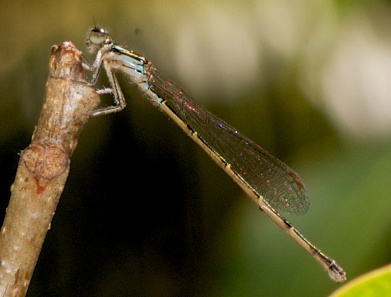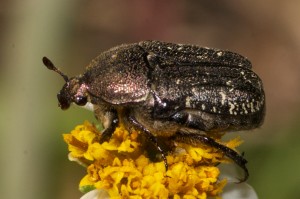Here in Florida, the ecological and astronomical seasons rarely coincide. April showers are rare, not the norm. And our insect fauna is active year-round, unlike those more temperate areas where most naturalists tend to live and work. (Not that there aren’t any in Florida; it’s just that it seems most field guide authors live in the Northeast or out West somewhere.)
But yesterday, while I wasn’t looking, the sun passed the celestial equator on its way north for the (northern hemisphere) summer. That means that today is the second day of spring here. And, purely coincidentally, I’m sure, I saw the first backyard damselfly in months, an immature Rambur’s Forktail (Ischnura ramburii). Since I wasn’t really expecting a damselfly today, I was so taken aback that I didn’t even get a good picture before the little beast flew away:

Oh, well. Now that I know they’re out there, I’ll be better prepared next time.
Other insects are on the wing as well. Take this Euphoria sepulcralis (“common” name Dark Flower Scarab, but no one uses either name, since they rarely notice this beetle), just doing its thing:

I’ve written about it before, for those of you who are interested in knowing more. I understand that this beetle can be a bit of a pest, but I’ve only noticed it going after the weeds in my yard, so I don’t mind its presence one bit. In the photo above, it’s on Bidens alba, one of our most annoying little weeds. The “two teeth” referred to in the genus name are on the seeds of the plant; they enable it to latch onto passing bits of fur or toddler sock, providing it transport to a new site. Needles(s) to say, it’s not one of my favorite plants, although it provides the local bees with a much-needed nectar pollen source during the months when other flowers aren’t available.
Hope your postequinoctial humors are good!
